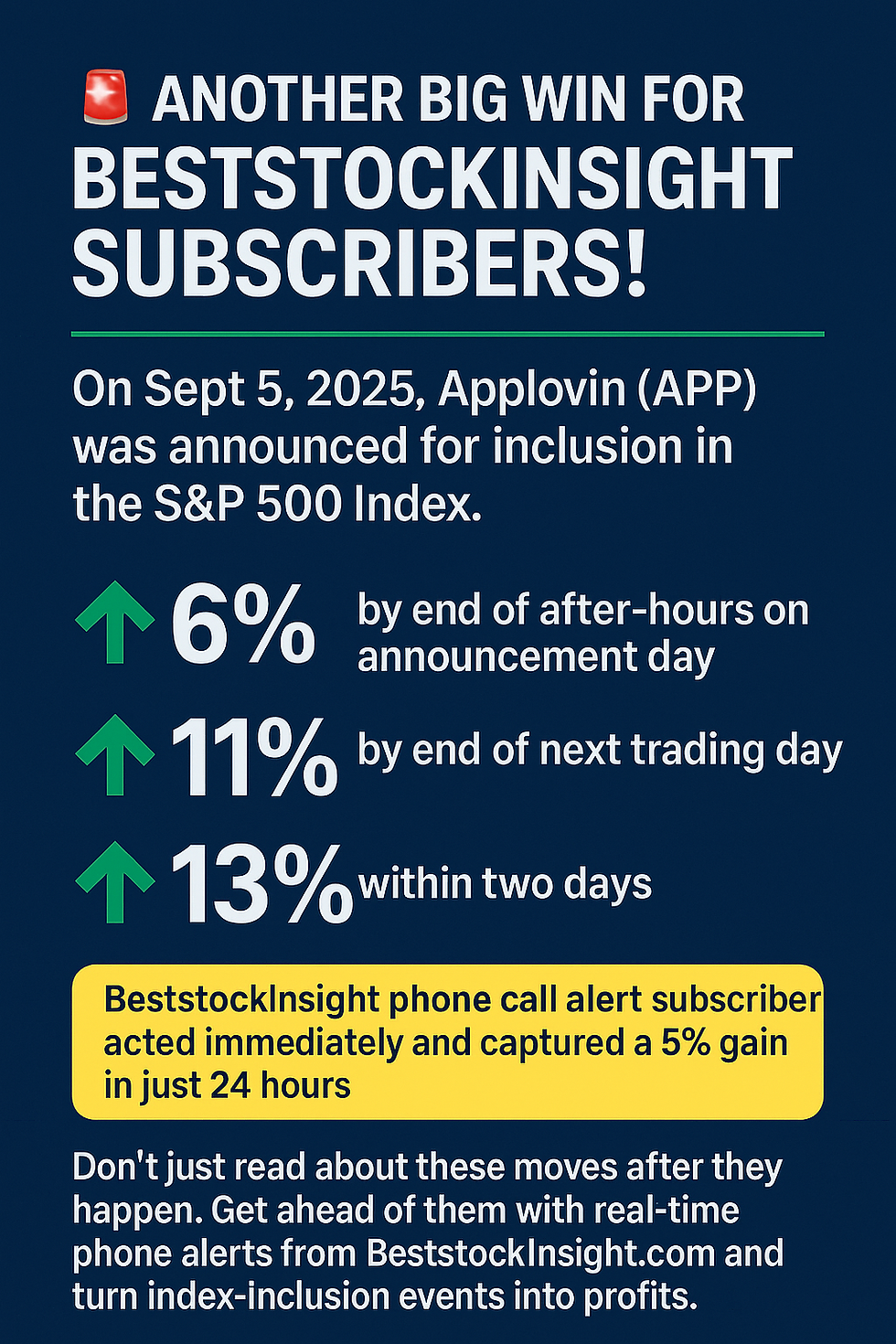Understanding the Impact of S&P Index Additions on Market Performance
- Kratin Soni
- Sep 7
- 3 min read
The S&P 500 Index is one of the most closely monitored stock market indices globally, representing the performance of 500 of the largest publicly traded companies in the United States. When a company is added to the S&P 500, it can have a notable impact on both the company and the overall market. This post will explore how S&P index additions affect market performance, highlighting their influence on investor behavior and stock prices.
What is the S&P 500 Index?
The S&P 500 Index is a market-capitalization-weighted index composed of 500 large companies listed on U.S. stock exchanges. As a benchmark for the overall performance of the U.S. stock market, it helps investors assess market trends. Managed by S&P Dow Jones Indices, the index undergoes regular reviews to ensure it accurately reflects market conditions.
To be included in the S&P 500, companies must meet strict requirements. For instance, they need a minimum market capitalization of $13.1 billion and must have positive earnings over the most recent quarter and the previous four quarters. This rigorous selection process ensures that only financially sound companies join the index.
The Process of Index Addition
A company’s addition to the S&P 500 follows a systematic selection process by the S&P Index Committee. Potential candidates are evaluated based on criteria like market capitalization, industry representation, and financial health.
Once a company is nominated for inclusion, the committee makes a public announcement. This often triggers an immediate response in the stock market, as many exchange-traded funds (ETFs) and index funds that track the S&P 500 are required to buy shares of the newly added company. For example, when Tesla was added to the S&P 500 in December 2020, it led to approximately $100 billion in demand for its stock from index funds.
Immediate Market Reactions
The market reaction to an S&P index addition is frequently positive. Investors often view this move as a sign of a company's strength, resulting in increased buying activity. This reaction can trigger a surge in the stock price, commonly referred to as the "index effect."
Research indicates that, on average, stocks added to the S&P 500 experience a post-announcement price increase of around 10% within the first month. This trend stems from the influx of capital from index funds and increased attention from investors interested in the stock.

Long-Term Performance Trends
Although the immediate effects of an S&P index addition are usually favorable, the long-term outlook can vary. Studies suggest that stocks included in the S&P 500 may outperform the broader market in the months following their addition. For instance, research has shown that within three years of inclusion, added stocks have a performance boost of approximately 5-10% over the market average.
However, this outperformance is not guaranteed to last indefinitely. Eventually, the stock's price might align with its intrinsic value, driven by the company's operational performance and prevailing market conditions. Investors considering stock purchases based solely on an index addition should conduct thorough research and analysis.
The Role of Institutional Investors
Institutional investors play a vital role in the dynamics of S&P index additions. These entities, which include mutual funds, pension funds, and hedge funds, often manage vast capital. When a new company enters the S&P 500, institutional investors generally purchase shares to adjust their portfolios accordingly.
This influx of capital can amplify the initial price increase, creating additional upward pressure on the stock. Moreover, the presence of institutional investors contributes to greater liquidity, making it easier for other investors to buy and sell shares.
The Broader Market Impact
The inclusion of a company in the S&P 500 can significantly impact the broader market. It often indicates shifts in sector representation, particularly as companies from growing industries are added. This can change investor sentiment and market dynamics.
For example, when a technology company with a strong growth potential is added to the index, it may encourage more investments in that sector, potentially driving performance across all technology stocks. Additionally, significant changes to the index—like the annual rebalancing that can include multiple additions or removals—can lead to fluctuations in the index's value, influencing overall market trends.
Final Thoughts
Understanding the impact of S&P index additions on market performance is essential for informed investing. While the immediate effects often lead to heightened interest and rising stock prices, the long-term performance may depend on the company's financial health and broader market conditions.
Investors should keep abreast of index changes and their possible implications, including the involvement of institutional investors and shifts in sector representation. Being well-informed will help investors navigate the complexities of the market more effectively.
In conclusion, S&P index additions represent significant events that can influence both individual stock performance and overall market trends. By staying alert to these changes, investors can better position themselves in the constantly evolving landscape of the stock market.

Comments